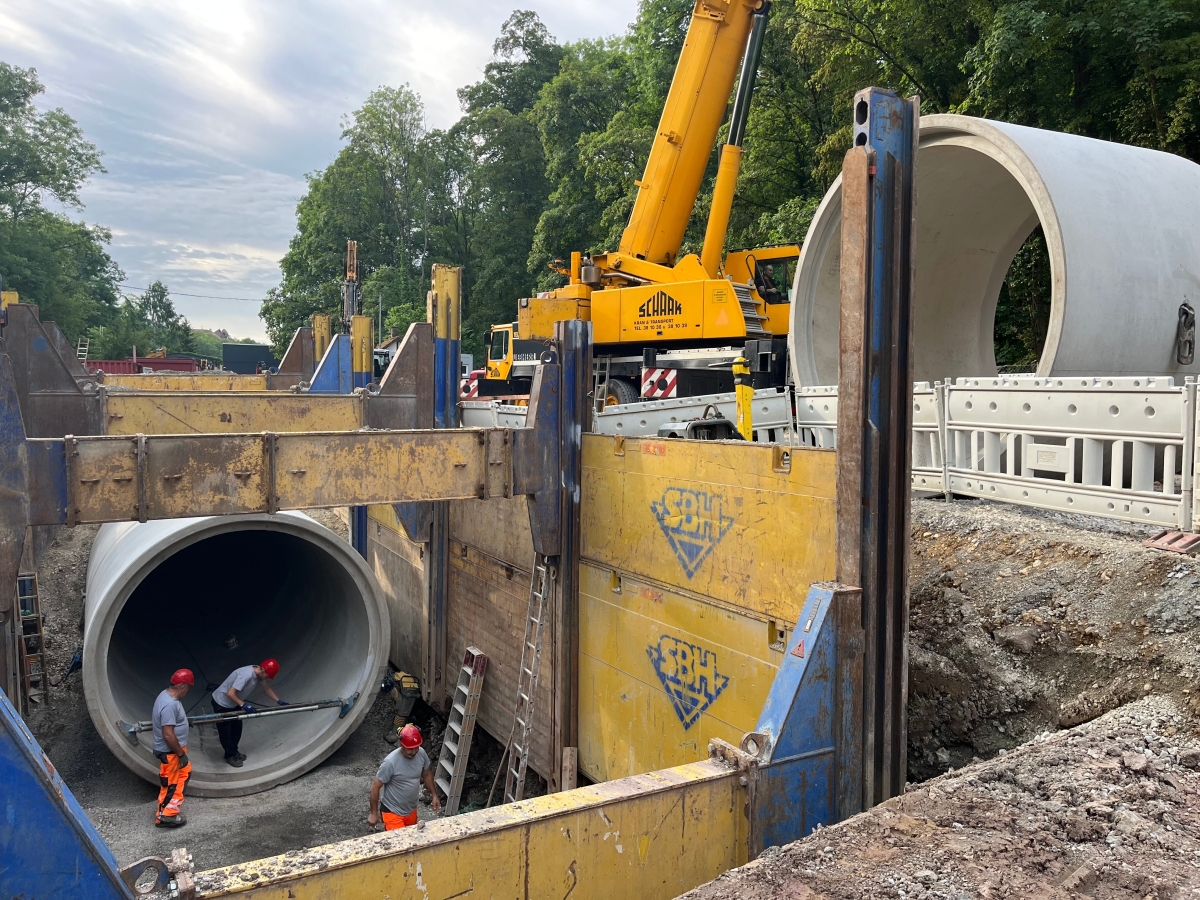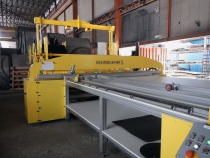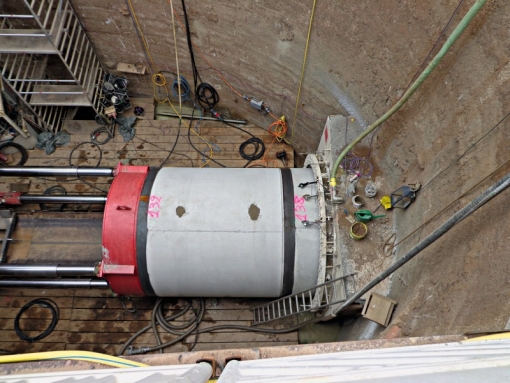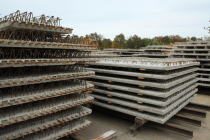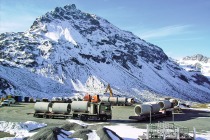Westrohr delivers FBS quality “cast from one mold”
The Düsingstrasse in Iserlohn has been totally or partly closed to automobile traffic since November 2007. The hydraulics of the existing sewerage system was no longer adequate to meet today’s requirements. This is the reason why Märkische Tiefbau GmbH from Lünen was commissioned to replace the old main collector and two intercepting sewers with a new sewer of larger diameter between the traffic circle and the Igelstrasse intersection. The segment bends with tangential entry for the construction project were manufactured by Westrohr Betonwerk Münster GmbH & Co. KG.
Reinforced-concrete pipes DN 1400 were used for the new main collector. The segment bends with tangential entry were cast from one mold. The reinforced-concrete pipes and the segment bends with tangential entry were manufactured to the more stringent requirements of the quality guidelines of the German Trade Association Concrete Pipes and Reinforced-Concrete (FBS) in order to meet the high requirements.
Special structures of high-performance concrete
The specifications of the engineer consultancy Planerbüro Rademacher & Partner Ingenieurberatung GmbH were explicit: Due to Düsingstrasse’s pronounced gradient, averaging 6 to 8%, and flow velocities of up to 10 m/s, the pipes and special structures were to be made of high-performance concrete C 70/85. The much denser structure and the greater resistance capacity are of special significance here, particularly for high flow velocities. To optimize the construction of the new main collection even further, Westrohr Betonwerk Münster GmbH & Co. KG, jointly with contractor Märkische Tiefbau GmbH, developed an additional special proposal that provided for the installation of precast structures – such as the segment bend with tangential entry. The precast structures can be used for pipes of nominal widths ≥ DN 1000 for directional changes.
Monolithically manufactured
The segment bends were manufactured monolithically. A method that, according to Westrohr’s managing director, Dipl.-Ing. Erich Valtwies, was patented for Westrohr Betonwerk Münster under AZ 10 2006 034512.6. “Monolithic production from one cast, other than is the case with immediate form removal, is carried out using hardening in the form,” explained Valtwies. “With this method, a concrete member of homogeneous structure and high resistance to the penetration of water with fair-faced concrete quality is created.” Moreover, with this production method only few joints are created and, accordingly, virtually no weak points. In addition, large manhole structures were used that Westrohr had manufactured in two parts. These involved three connected structures, one of which was provided with an inlet on the side and one, on the inside, with a drop structure as the bypass for the inlet. Each structure consists of a lower part and the cover and weighs in at up to 28 to 43 t, depending on its size and design. The structures were delivered to the construction site “just in time”.
Well within schedule
The reinforced concrete pipes of nominal width DN 1400 replaced the old main collector that led out of the city in the direction of the sewage treatment plant. The hydraulics of the brick egg profile with a nominal width of 800/1400 had no longer been able to meet today’s requirements and increased use. In addition, there were the concrete sewers of a nominal width of DN 300 and/or DN 700 that ran, one each, in parallel to the left and right of the main collector underneath the sidewalks. These sewers had served as recipients for the drainage systems of the connected houses and were joined at the Igelstrasse/Karl-Arnold-Strasse intersection.
The construction measures comprised a total length of 650 m. The site engineer, Dipl.-Ing. Bernd Lunemann of Märkische Tiefbau GmbH expressed himself as satisfied with the construction progress: “We are well within schedule. The measure is scheduled for completion in November.” In this connection, the site engineer once again stressed the excellent collaboration between the contractors involved in the project.

